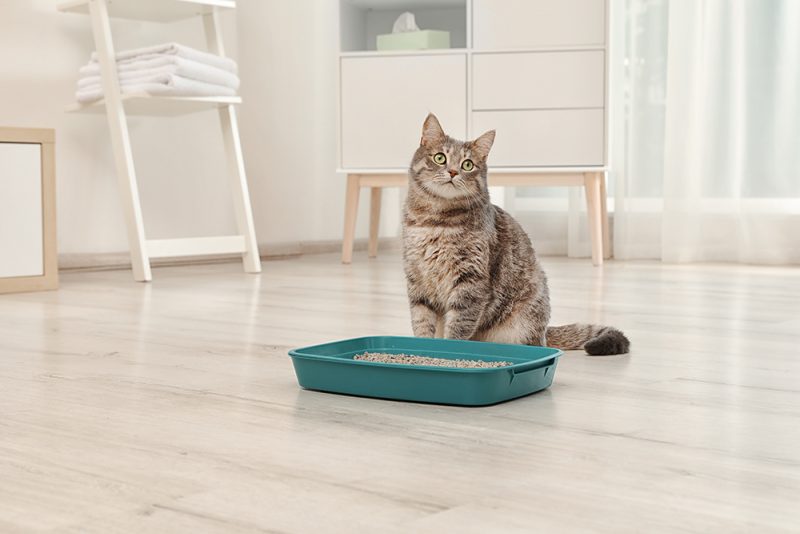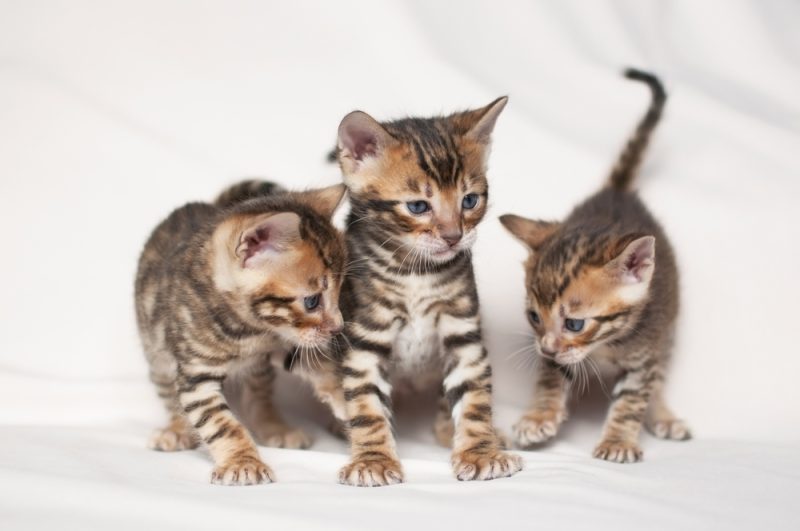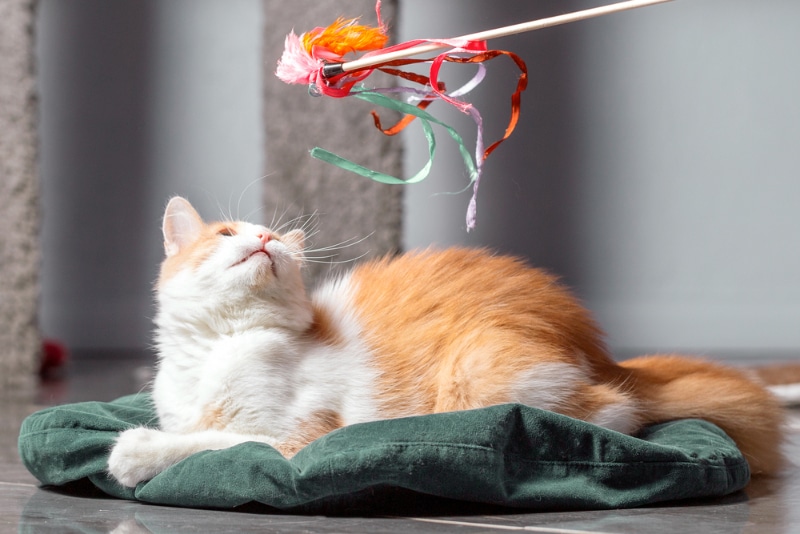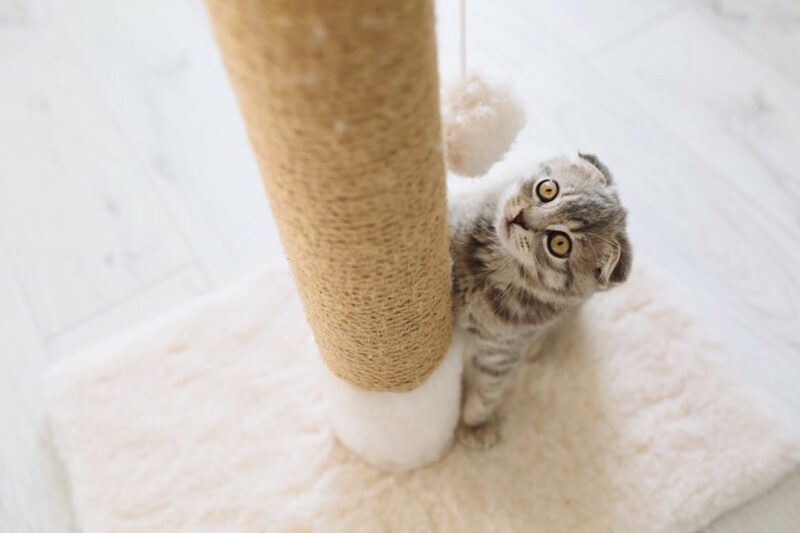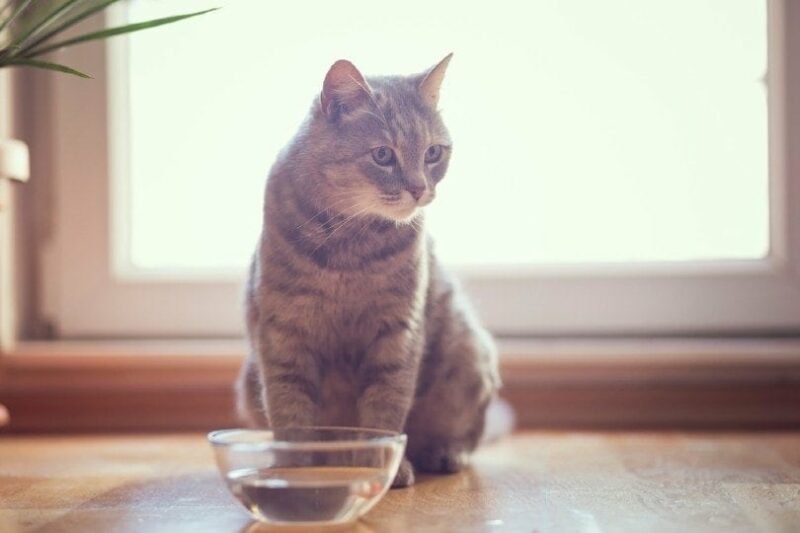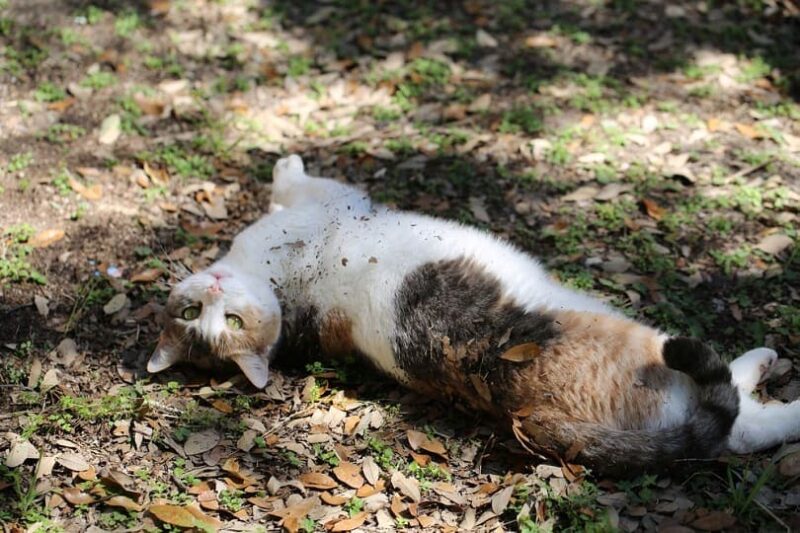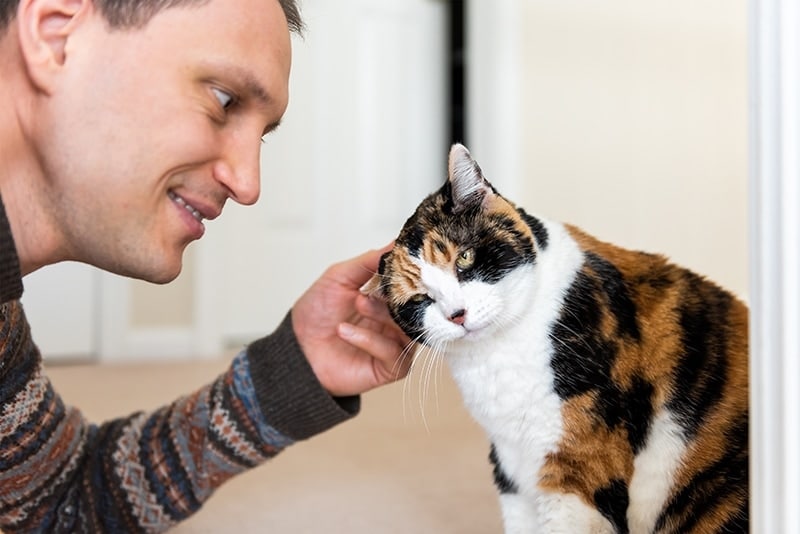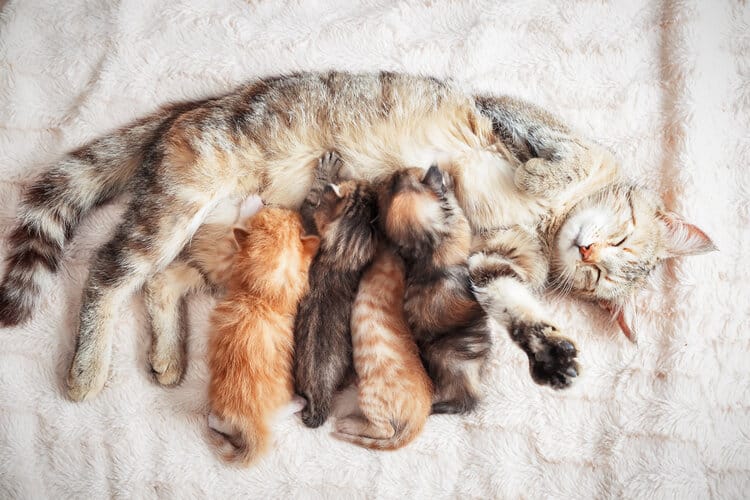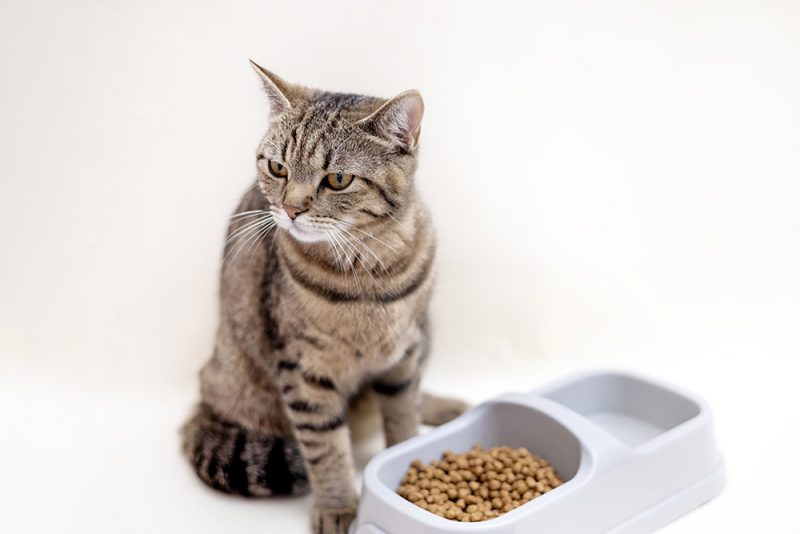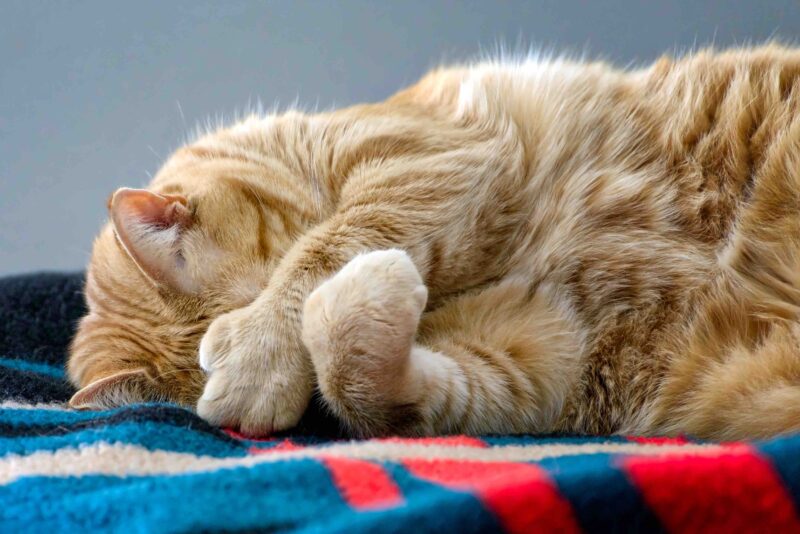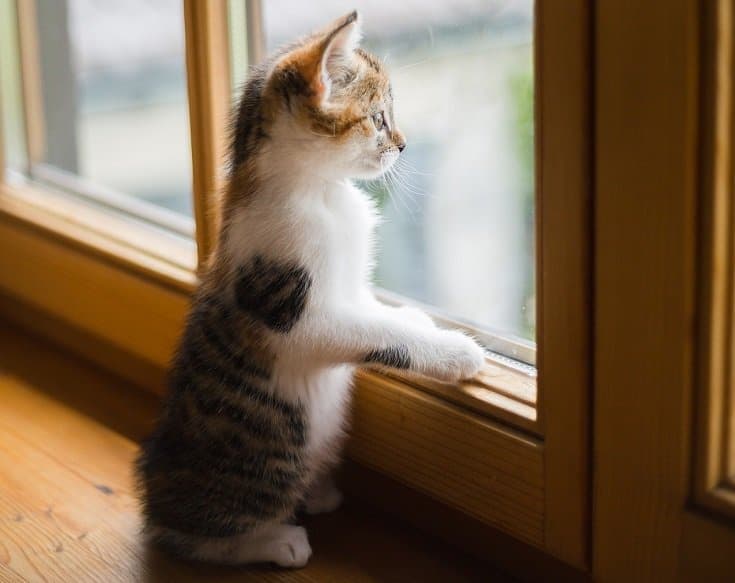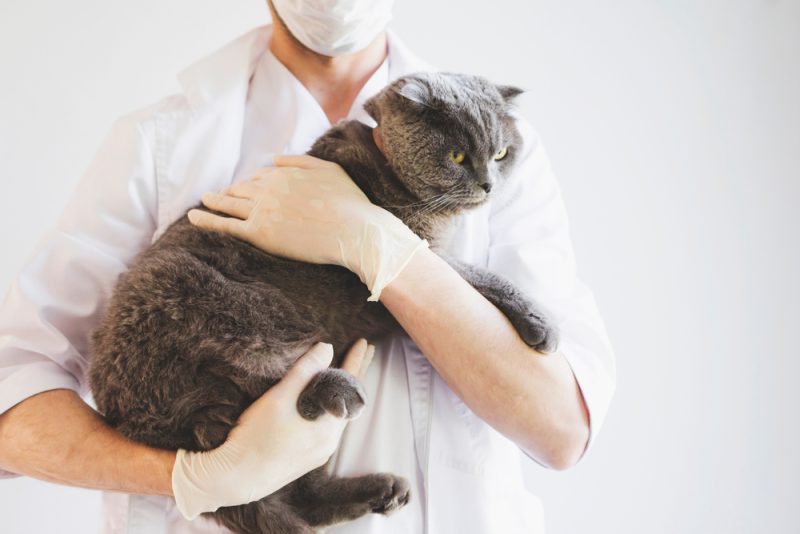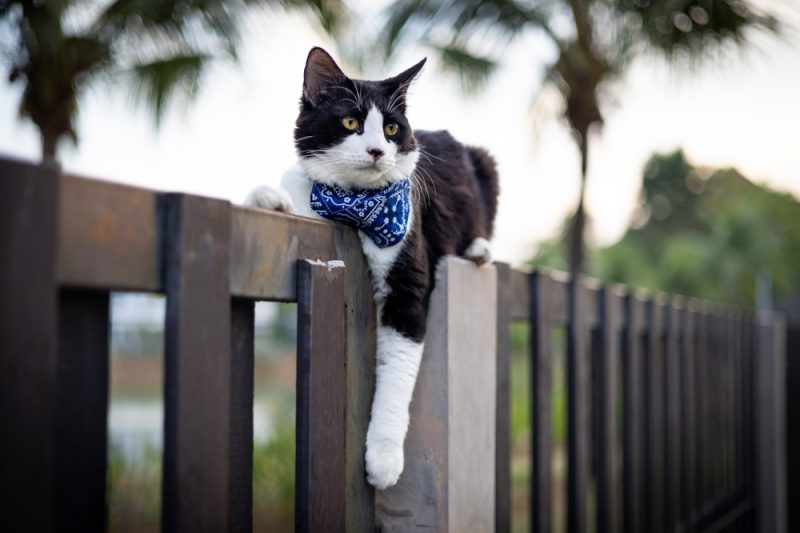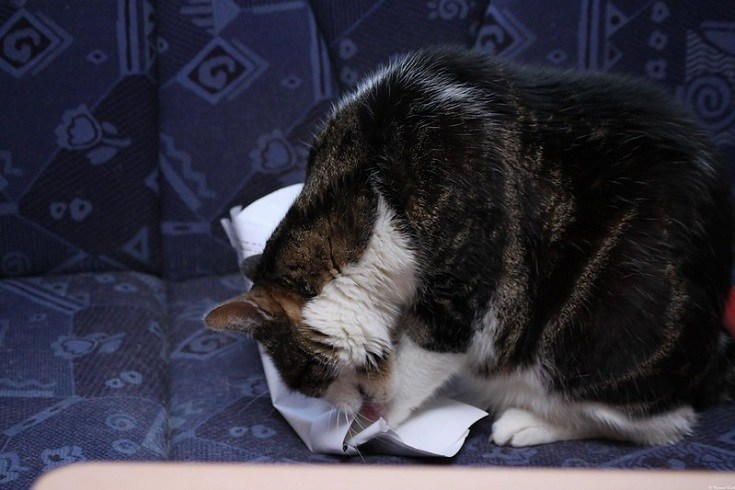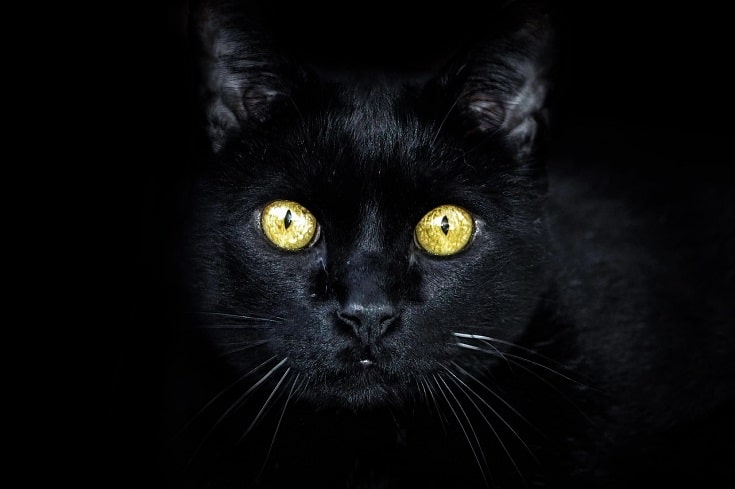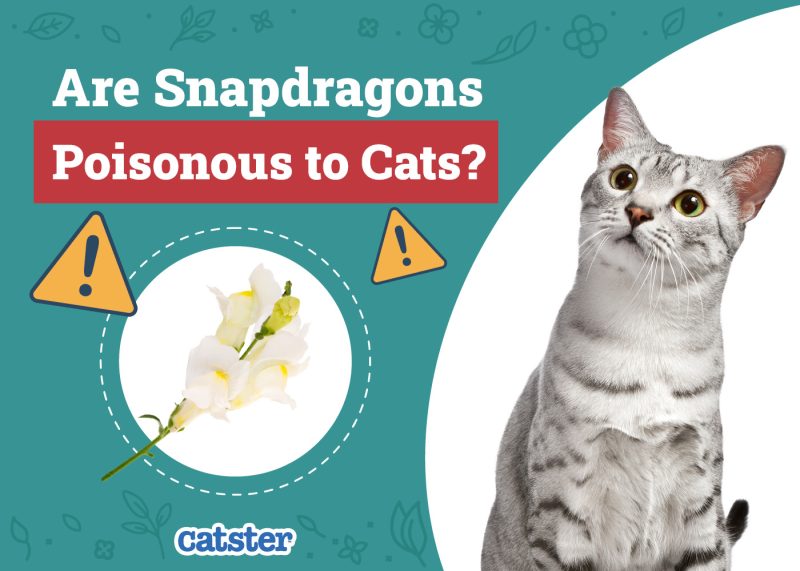In this article
View 5 More +Constipation is no joking matter, and it’s a condition that we see in cats more often than you might think. Hairballs, dehydration, neurological problems, arthritis, and kidney disease are all relatively common conditions in cats, and they can all lead to constipation. Sometimes the problem settles down on its own, but quite often, our cats need some help in the form of a laxative. But how long does it take for cat laxatives to work? Should we be expecting to see results within a few minutes, hours, or days?
Fortunately for our feline friends, laxatives tend to take effect quite quickly, but this will depend on where, when, and what type of laxative was given; sometimes you may even be faced with an unpleasant car journey home from the vet!
In the following article, we’re going to take a look at what causes constipation in cats, the role that laxatives play in treating it, and 6 options to help a constipated cat at home.

What Causes Constipation in Cats?
Before we delve into the world of cat laxatives, there are two terms we need to define: constipation and obstipation.
Constipation: the delayed, difficult, and/or painful passage of feces that are usually dry and hard. Constipation is a temporary situation that usually resolves on its own or with the aid of medication (stool softeners, laxatives, etc.). If it doesn’t resolve, it can lead to obstipation.
Obstipation: intractable constipation, with impacted feces often extending up to the ileocecal valve (where the small intestine meets the large intestine). Obstipation typically requires a combination of medical treatment and manual removal of feces (enema).
There are a number of problems and conditions that can lead to constipation and obstipation in the cat, including:
- Hairballs, bone, or other foreign objects
- Dehydration – increases fluid absorption from the large intestine, slowing the passage of fecal matter
- Kidney disease – leads to increased water loss and dehydration
- Pain/arthritis – pain in the back and hind limbs can make passing feces more difficult, leading to delayed and incomplete defecation
- Diet – dry food diets, as well as diets too low or too high in fiber, can contribute to constipation
- Obesity – increased body fat can impede peristaltic movements and make it more difficult to pass feces
- Megacolon – pathological dilation and lack of motility in the colon which can both cause and result from chronic/repeated obstipation and constipation
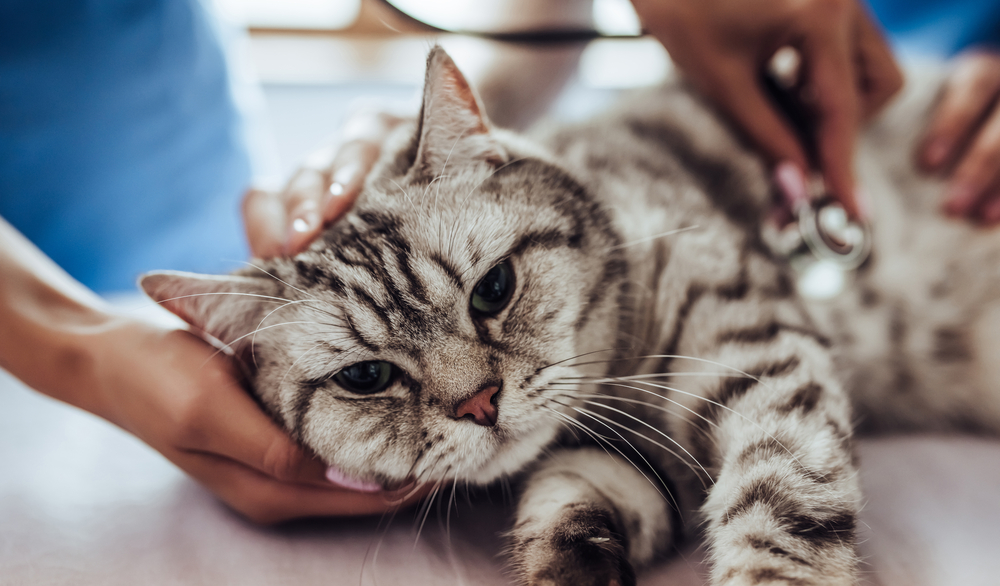
How Is Constipation Treated?
The treatment of constipation in cats should be multifaceted, aiming to address both the problem and the inciting cause and reduce the risk of further episodes. Depending on the case, this may involve:
- rehydration with oral or intravenous fluids
- diet changes and/or weight loss
- pain management
- controlling underlying disease (eg. kidney disease)
- enema or manual evacuation of feces under sedation
- prokinetic medications to increase gut motility
- laxatives
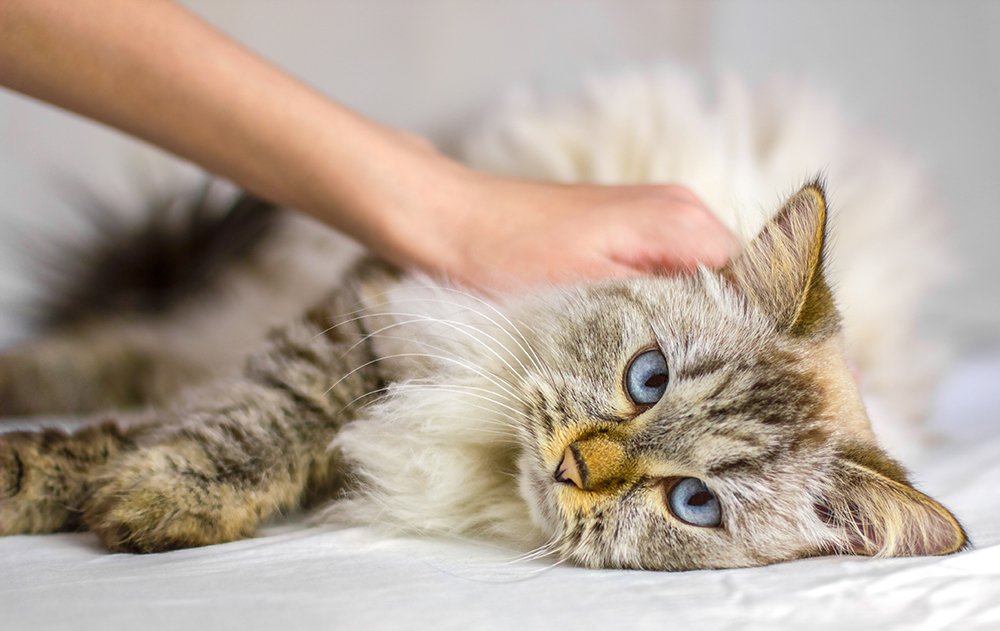
How Do Cat Laxatives Work?
Laxatives help the feces pass more easily by increasing the fluid content of the stool or lubricating the feces. In veterinary practice, there are two main laxative types used:
- Lactulose – a disaccharide solution that is indigestible to mammals and birds. It is given by mouth, and as it travels through the digestive tract, normal gut bacteria consume the sugars and produce acids and carbon dioxide gas, which draw fluid into the bowel, softening the stool.
- Rectal suppositories – a paste delivered directly into the rectum, where it stimulates and lubricates the rectal wall, softens the stool, and draws fluid into the colon.
Products like Cat Lax, which are formulated to help cats pass hairballs more easily, are not technically laxatives; however, overzealous use of them will usually result in diarrhea.
How Long Does It Take for Cat Laxatives to Work?
Lactulose: because lactulose needs to travel through the digestive system, it will usually take between 12-24 hours to start working, but some cases may take longer and others will be affected sooner.
Rectal suppositories: depending on the situation, this type of laxative can work immediately. If your cat is obstipated, it may take a little longer, but results should be seen within an hour.
Both of these methods may be administered at the veterinary hospital or at home, so bear this in mind if the vet has administered a rectal suppository!
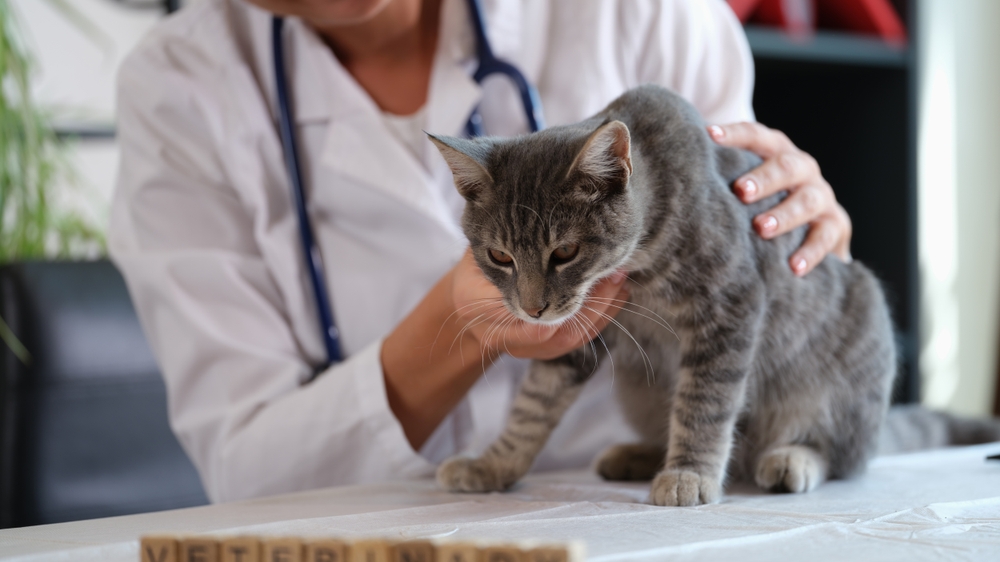
How Often Are Cat Laxatives Given?
Lactulose is usually given every 8-12 hours until feces are being passed without difficulty, whereas suppository medication is usually only given once or twice at the start of treatment to help speed things along.
It is important not to exceed the recommended dosing of cat laxatives, as this can lead to diarrhea and dehydration.
How Many Days Can a Cat Go Without Pooping?
A healthy cat will usually pass feces once or twice a day, and no poop for more than 48 hours would be considered problematic. However, this will depend on a cat’s diet, and whether or not they have been eating. For example, a cat that has been fasted and had surgery may not pass feces for 72 hours after they come home.
Can Constipation Resolve On Its Own?
Constipation can, and often does, resolve on its own, but this depends very much on the individual case and why the constipation occurred. If your cat is straining to pass feces, or you haven’t seen any poop in their litter box for over 48 hours, it’s time to speak to a vet. The longer the problem persists, the harder it will be to treat.
If you need to speak with a vet but can't get to one, head over to PangoVet. It's an online service where you can talk to a vet online and get the advice you need for your pet — all at an affordable price!


Are There Home Remedies for Constipation in Cats?
If your cat is having some difficulty passing feces, the best course of action is to speak to a vet for advice and treatment. Depending on your cat’s age, weight, health, and appetite, they may require a physical examination, blood tests, or urgent treatment.
For mild cases of constipation, here are six ways to help.

The 6 Ways To Help A Constipated Cat Poop
1. Hydration, Hydration, Hydration
A major contributing factor for constipation is dehydration, which can be further compounded by the use of laxatives. While it can be difficult to make our cats drink more water, there are a few tricks we can use to encourage them to increase their fluid intake.
- Provide clean, fresh, cool water in a few different locations and bowl types. Many cats prefer their water bowl to be placed up high so they can enjoy a drink while watching the world go by.
- Water fountains – to a cat, moving water= fresh water. They also attract cats by being more interesting than a still bowl.
- Feed more wet food and add some extra water to maximize fluid intake.
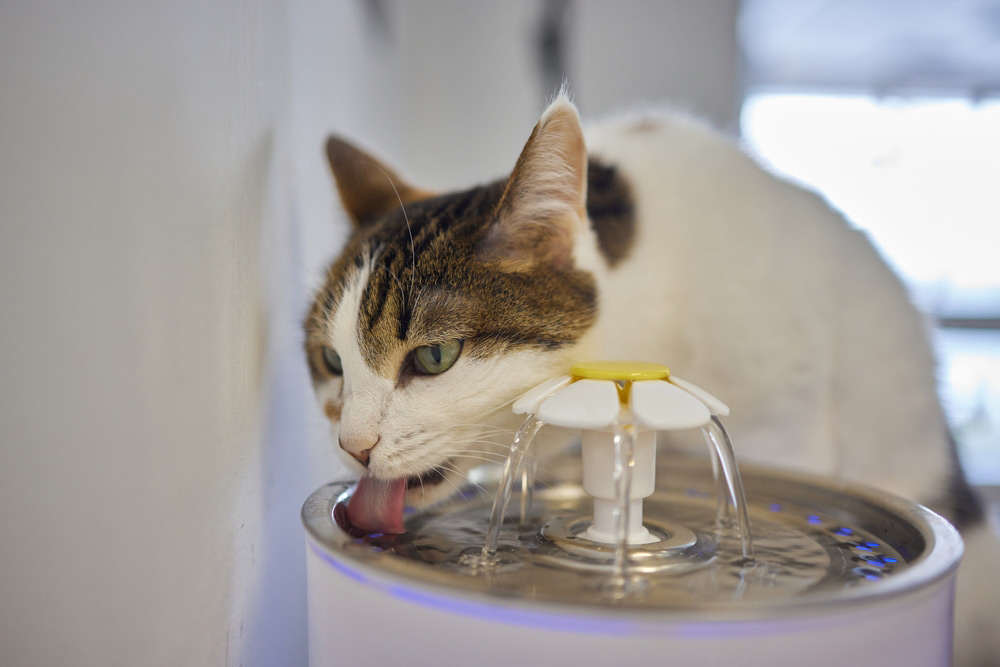
2. Olive Oil
Adding half a teaspoon of olive oil once or twice a day to your cat’s food may help add moisture and lubrication to the situation. Although olive oil is technically safe for cats, it is also 100% fat, so it should not be used often. If you haven’t seen an improvement within 48 hours, it’s time to call the vet.
3. Homemade Enema
This is not something for the faint-hearted, nor something many cats will readily tolerate, but it is possible to give your cat a mini-enema at home.
What you’ll need:
- a syringe or a turkey baster (that you won’t be using for cooking ever again!)
- lubricant (eg. KY Jelly) or cooking oil
- warm water (not hot)
Mix approximately 2-3cc of oil/lubricant with 2-3cc of water. Apply some extra lube/oil to the anus and the end of the syringe. Gently insert the syringe no more than ½ inch, and empty the liquid into the rectum. Try to hold the syringe in place for 30 seconds to prevent it from being immediately ejected.
If well tolerated, you can repeat the procedure once if needed, but no more than that.
DO NOT attempt this if your cat is distressed, pained, or fighting you. You should only use this technique if you are confident that you can safely restrain your cat in a stress-free way. Giving an enema to a struggling, stressed cat will risk causing severe physical and emotional trauma.
4. Topical Lubrication
Straining to pass hard feces can lead to a sore bottom, so if your cat will allow it, applying some lubricant or Vaseline to their anus might make things a little easier on them.
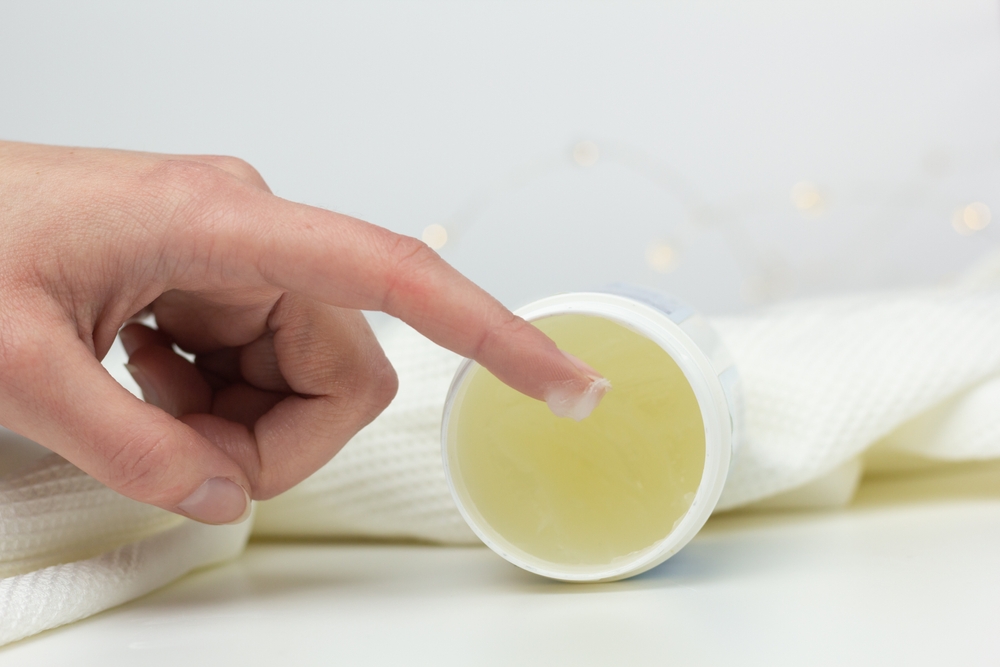
5. Tranquility
Make sure your cat has a nice, quiet place to do their business. This should always be the case, but particularly if they are having difficulty passing feces, they will likely appreciate having their litter box in a quiet corner, away from any potential loud noises and interruptions.
6. An Extra Litter Box
Cats can develop a negative association with their litter box if they have experienced some pain or discomfort, or sometimes they just want to try a different location to see if that makes a difference. This is why cats with toileting problems often start peeing or pooping outside their litter box. If your cat is having some difficulty, make sure they have another box to use, preferably one that is quite large, with a deep layer of litter for digging.
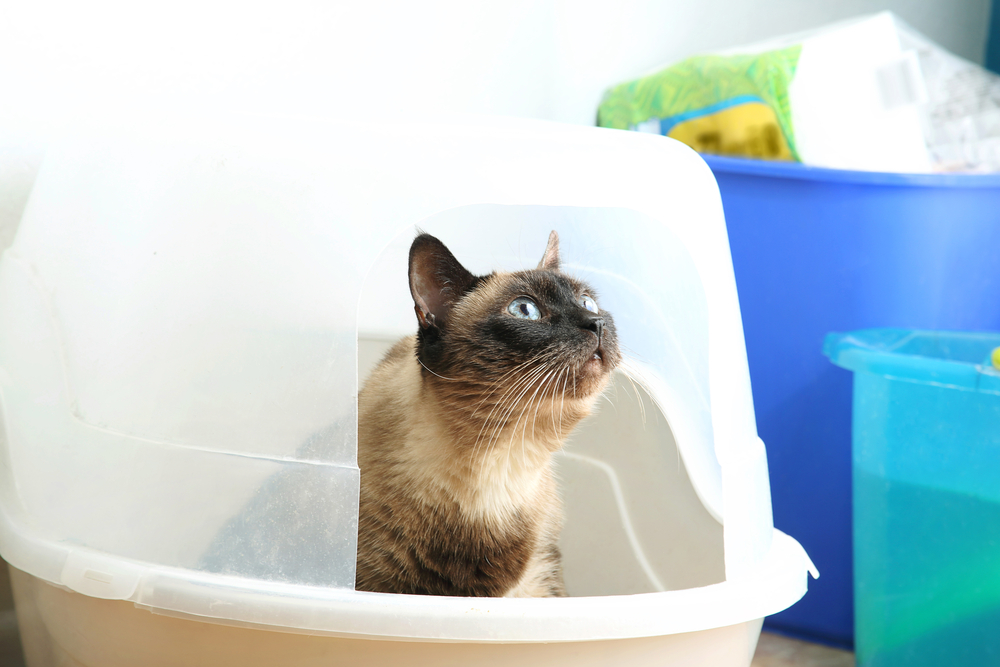
Remedies to Avoid
Human Laxatives
Most human laxatives contain ingredients and doses that can be harmful to cats and should be avoided. The one exception is lactulose, which is both a human and veterinary medication. However, you should never give your cat any medications that have not been prescribed for them without checking with a vet.
Liquid Paraffin
This has been a commonly used home remedy to treat constipation in pets and humans, but we now know that the risks of using liquid paraffin far outweigh the benefits. This mineral oil (not to be confused with the type of paraffin used as fuel, aka kerosene) will often result in a slurry of fecal material exiting the body, but will not necessarily help with constipation. Additionally, if inhaled, which can easily happen when giving a cat an oral liquid, paraffin can cause severe pneumonia.

Tips for Preventing Constipation
As always, prevention is far better than cure, so here are a few tips and tricks to help keep your kitty regular:
- Keep them hydrated – as mentioned above, making sure your cat is getting plenty of fresh water and moisture in their food will help reduce their risks of dehydration and constipation.
- Watch their weight – obesity is a major contributor to constipation in cats, so make sure your cat is getting the right type and amount of food for their ideal weight.
- Check their fiber intake – being obligate carnivores, cats do not have a specific fiber requirement, but with their more sedentary lifestyles, most cats benefit from having fiber included in their diet to help with satiety (feeling full) and reducing constipation. Their dietary fiber should not exceed 15%, with more active cats needing less than lazier felines.
- Keep them active – as you may have worked out from the previous point, being active helps your cat stay regular. Ensure your cat is getting plenty of exercise through play, interactive toys, and puzzles, and providing different levels for them to climb and explore.
 Final Thoughts
Final Thoughts
Constipation is an uncomfortable, distressing, and relatively common condition in cats. While the occasional bout is nothing to be too worried about, cats with frequent or severe constipation will need veterinary care to address the problem, diagnose any underlying health issues, and formulate a treatment plan.
If your cat is constipated, one part of that treatment is likely to be laxatives, and it’s important to know how long they will take to be effective so we know what to expect.
If your cat has been given an oral liquid like lactulose, it may take 12-24 hours before you see a significant improvement in their condition. With a suppository treatment, the results tend to be much faster, if not immediate.
Hopefully, the information above can help you manage and prevent constipation in your cat, but we would always recommend speaking to a vet for advice before trying anything at home.
Featured Image Credit: New Africa, Shutterstock
